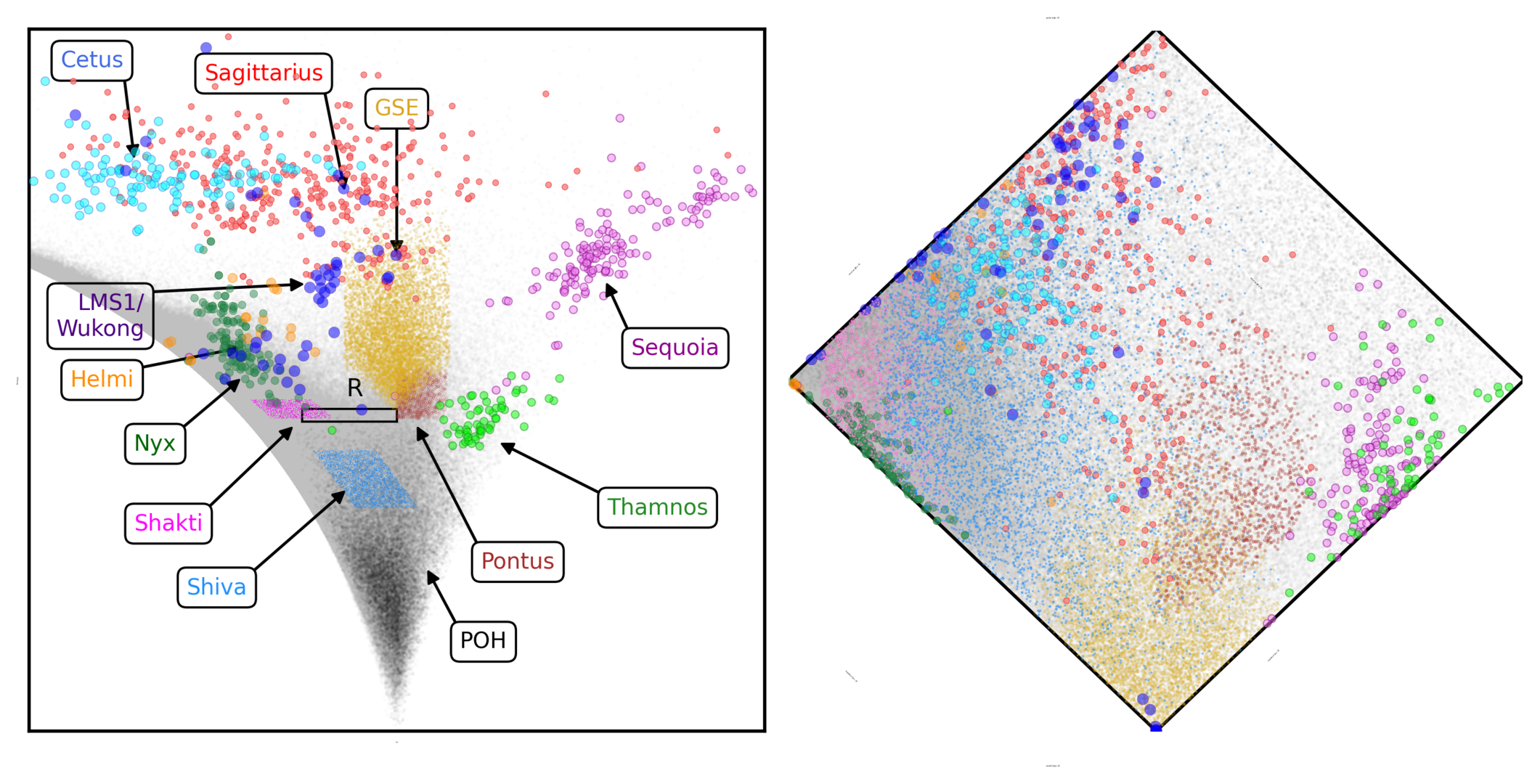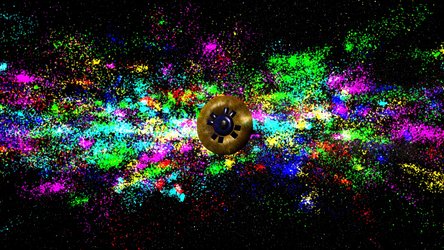

The starry streams making up the Milky Way
The Milky Way has a complicated past. Our galaxy is filled with stars that arrived at different times in cosmic history, delivered as another galaxy or object collided with the Milky Way and was subsequently consumed.
This image shows a few of these different starry populations, with each colour representing stars that joined the Milky Way via a different collision event. Two of these streams are newly discovered thanks to ESA’s billion-star surveyor, Gaia.
Data from Gaia enabled researchers to determine the content and composition of the individual stars making up the Shakti (pink) and Shiva (pale blue) streams, which in turn revealed more of their properties and movements through space. In fact, Gaia has helped to reveal several of these past collisions (read more on this here).
The two frames show different kinds of information about the stars plotted against one another – information related to their energy and motions as they orbit and move through space – to create the fan-like and diamond shapes shown here.
The rectangular box labelled ‘R’ represents a ‘ridge-like structure’.
[Image description: Two graphs show a distribution of stars on a white background. Small groups of stars that belong together can be recognised, they were given the same colour and a population name.]





